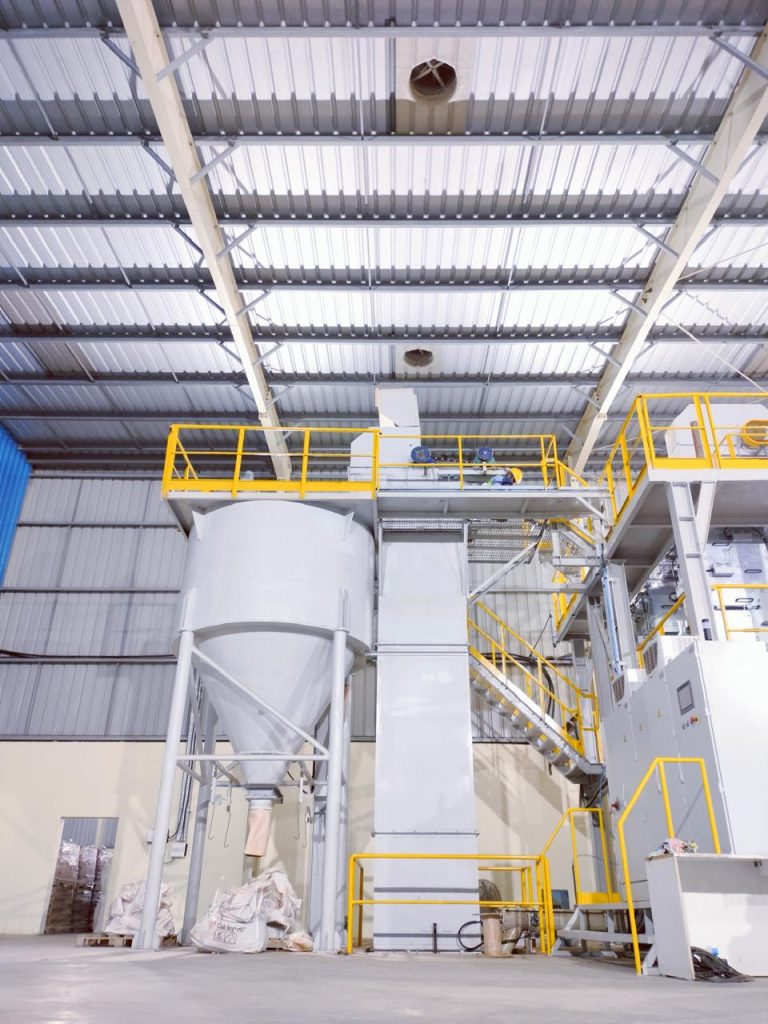
Bucket Elevator
A bucket elevator is a type of conveying system that uses buckets attached to a belt or chain to lift materials vertically. Here are some key features and specifications:
Components
- Buckets: Attached to the belt or chain to carry materials.
- Belt/Chain: Supports the buckets and moves them vertically.
- Pulleys: Support the belt/chain at the top and bottom.
- Drive: Electric motor or gearbox that powers the elevator.
- Housing: Encloses the elevator to prevent material spillage.
Specifications
- Capacity: Up to 1000 tons per hour.
- Lift Height: Up to 50 meters (164 ft).
- Belt/Chain Speed: 0.5 m/s to 2.5 m/s (1.6 ft/s to 8.2 ft/s).
- Bucket Size: 1 liter to 100 liters (0.03 cu ft to 3.5 cu ft).
- Power: Up to 500 kW (680 HP).
Types
- Centrifugal Discharge: Buckets discharge materials by centrifugal force.
- Continuous Discharge: Buckets discharge materials continuously.
- Positive Discharge: Buckets discharge materials positively.
Applications
- Grain Handling: Elevating grains, seeds, and other agricultural products.
- Mining: Elevating minerals, ores, and other mining products.
- Cement: Elevating cement, limestone, and other cement products.
- Food Processing: Elevating food products, such as sugar, flour, and rice.
Advantages
- High Capacity: Can handle large volumes of materials.
- Vertical Lift: Can lift materials vertically, saving space.
- Low Maintenance: Simple design with few moving parts.
- Flexibility: Can be used in various industries and applications.
- Bucket elevator can elevate a variety of bulk materials from light to heavy and from fine to large lumps. A centrifugal discharge elevator may be vertical or inclined. Vertical elevators depend entirely on centrifugal force to get the material into the discharge chute.
